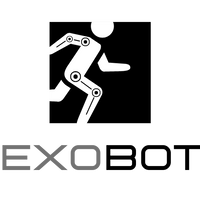Blog
Revolutionizing rehabilitation
How Advanced Manufacturing and 3D Printing are Shaping the Future of Bionic Arms
Bionic arms have come a long way since their early, clunky prototypes. Today, these remarkable devices are transforming lives, offering people with limb loss the ability to regain mobility, independence, and even a sense of touch. But this wouldn't be possible without the advancements in two key areas: advanced manufacturing and 3D printing.
For many amputees, traditional prosthetic limbs can be bulky, uncomfortable, and expensive. The one-size-fits-all approach often results in a poor fit, leading to skin irritation and limited functionality. Additionally, the manufacturing process can be slow and costly, hindering access for those who need it most.
Arnav Jain
Feb 27, 2024
Advanced Manufacturing
Building the Future, One Component at A Time
Advanced manufacturing techniques are revolutionizing the way bionic arms are produced. Here’s how:
Lighter, Stronger Materials
New materials like titanium alloys and carbon fiber composites offer incredible strength-to-weight ratios, making bionic arms lighter and more comfortable to wear.
Enhanced Functionality
Advanced manufacturing processes allow for the creation of complex components with intricate mechanisms. This translates to bionic arms with improved dexterity and a wider range of motion.
Improved Durability
Bionic arms are built to withstand daily wear and tear. Advanced manufacturing techniques ensure components are robust and long-lasting, minimizing the need for frequent replacements.
3D Printing
Customization Takes Center Stage
3D printing is a game-changer for bionic arms, offering several advantages:
Personalized Design
Traditional prosthetics often require extensive modifications for a proper fit. 3D printing allows for the creation of custom-designed bionic arms that perfectly match an individual's anatomy, leading to greater comfort and functionality.
Faster Production
3D printing significantly reduces production time compared to traditional methods. This means patients can receive their bionic arms quicker, minimizing disruption to their lives.
Cost-Effectiveness
3D printing has the potential to make bionic arms more affordable. This could open doors for a wider range of people to access this life-changing technology.
A Powerful Synergy
Advanced Manufacturing & 3D Printing Working Together
A bionic arm with 3D-printed sockets and components perfectly matching a user's residual limb, manufactured using advanced, lightweight materials
Complex, high-performance components like joints and actuators produced through advanced manufacturing techniques
The Future of Bionic Arms
A Brighter, More Inclusive Horizon
Advanced manufacturing promises even stronger, lighter materials and intricate functionalities, while 3D printing empowers true personalization – imagine bionic arms seamlessly integrating with individual anatomies, produced faster and potentially at a lower cost. This powerful synergy will unlock a world where bionic arms are not just accessible to more people, but also continuously evolve to offer enhanced dexterity, strength, and sensory feedback, empowering users to live life without limitations.
At Exobot Dynamics, we are committed to leveraging the latest advancements in both advanced manufacturing and 3D printing to develop bionic arms that empower people to live life to the fullest.
Exobot Dynamics pvt ltd
Join us
On our mission to end physical disability...
